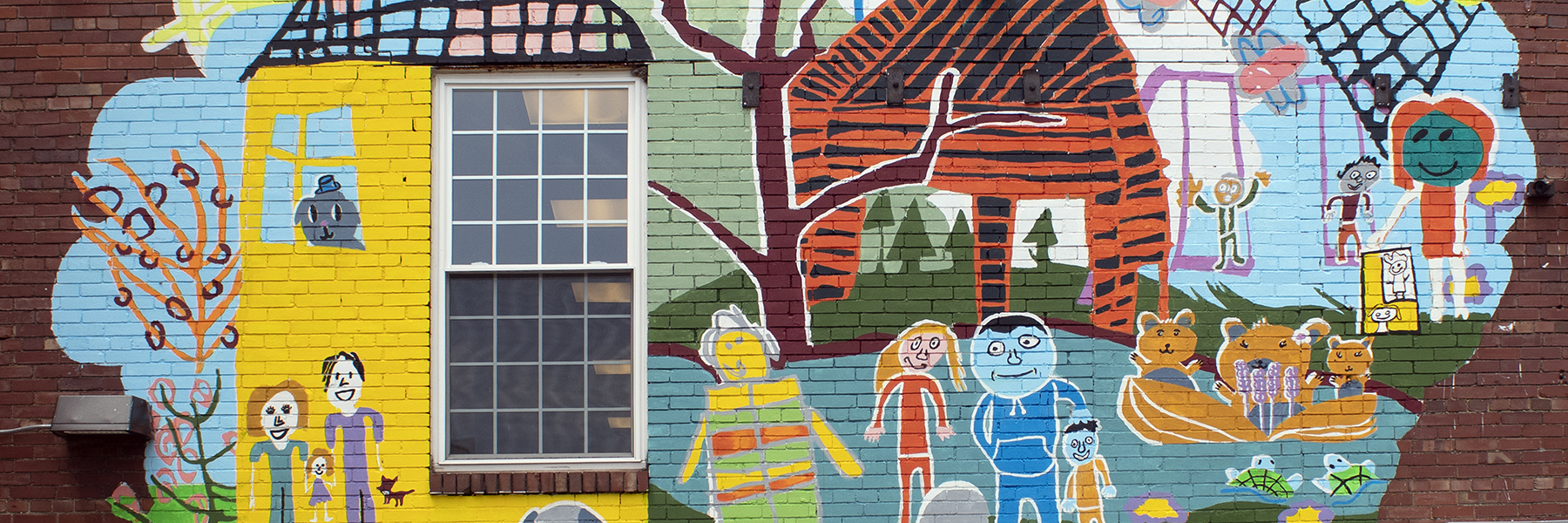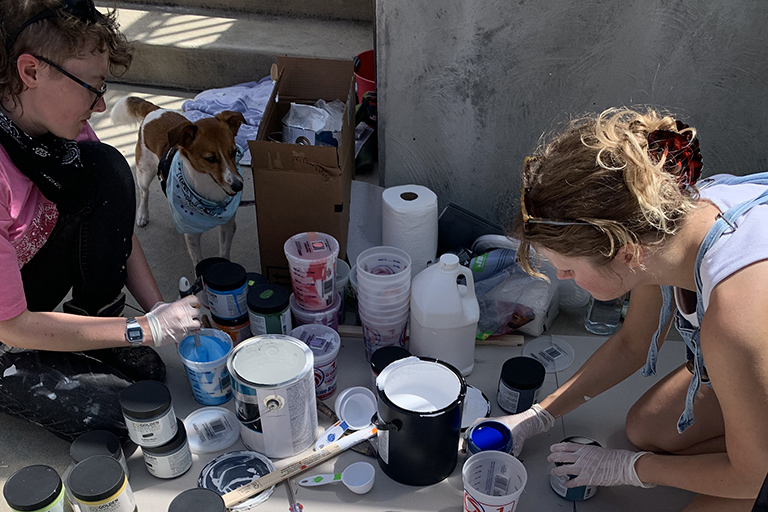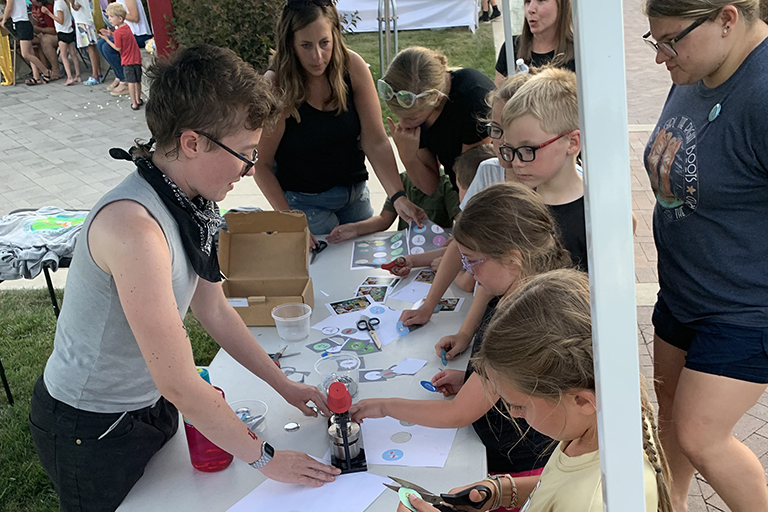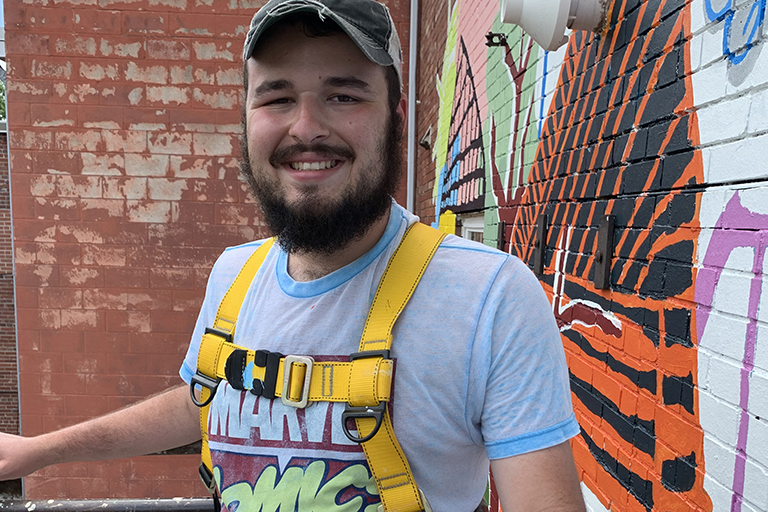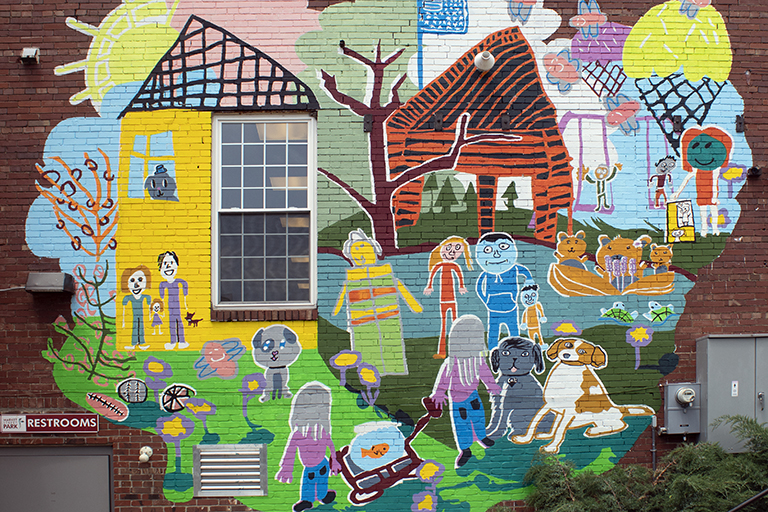5 Questions with…
Martha MacLeish
Associate Professor and Program Director, Creative Core
Eskenazi School of Art, Architecture + Design
Since before the pandemic, Martha MacLeish has been engaged in a collaboration with the IU Center for Rural Engagement and leaders in Huntingburg, Ind., to help revitalize the city’s downtown area. With Huntingburg Elementary School teacher Emily Meyer, the idea for a mural based on the children’s art was born.
Q: At what point in your collaboration with Huntingburg city leaders did the public art conversation turn to incorporating children’s art, and why is this perspective so important?
Martha MacLeish: One aspect of place making’s mission is to bring meaning to shared spaces, and I was excited to see how Huntingburg’s children might do this through a mural. I had the opportunity to teach young children early in my career and was struck by how important art making was to them, and by how inventive they were. When I expressed my interest in working with elementary school students, Emily Meyer’s name came up immediately as a teacher with strong connections with her students and enthusiasm for community projects. Children engage in the world around them in ways that we often lose sight of as adults, and seeing their work revives our own perspective. Hopefully, the children who participated in this project will find it exciting to see their ideas celebrated in a public way.
Q: In what ways did Eskenazi students assist with the mural project? Are plans in the works for similar partnerships in the 2022-23 academic year?
M.M.: The Eskenazi students who worked on this project were just as taken as I was with the spirit of the children’s drawings, and we had interesting discussions about how we might incorporate them into a coherent composition. The Eskenazi students assisted in translating the children’s drawings into vector files so that the drawn images could be simplified into shapes without losing their essential character.
Once a composition was developed, we all adjusted its organization and refined color choices. Then students created large stencils by tracing projected images onto paper and perforating the lines with an electro-pouncing machine. A group of six of us spent a week in Huntingburg, transferring the drawings onto the site wall and painting the mural. I’m sure more partnerships are being developed, and I hope to be part of another project soon.
Q: What advice would you give someone who wants to do a similar public art project in their own community? What surprised you about the process?
M.M.: Working through the many steps of a project like this takes more time and planning than I expected, but the process was immensely gratifying. I would recommend working out a very generous timeline.
Q: What are you working on currently that you’re excited about?
M.M.: I’m working on a collaboration with Professor Malcolm Smith for an exhibition at the Republic Building Gallery in Columbus, Ind.
Q: What’s your favorite piece of art on the Bloomington campus and why?
M.M.: I’m lucky to work in the Fine Arts Building which connects directly to the Eskenazi Museum of Art. On my most recent visit, I enjoyed looking at a sculpture by Leonardo Drew, Number 258 (2020), that was acquired by the Museum just last year. I also spent time with a small portrait by Gerard ter Borch made in 1660. I can’t pick just one favorite work from the museum’s collection but being able to look at each work with the memory of the previous still in mind helps me to recognize connections and commonalities, and contrasts and divergences; this dialogue is what I most appreciate.
MacLeish came to IU as a lecturer in 1999 and today teaches drawing and color design at the Eskenazi School. She earned a B.F.A. in painting and a B.A. in art history at the University of Massachusetts Amherst and an MFA at Yale University. Before coming to IU, she taught at Southern Utah University and at the Savannah College of Art and Design in Savannah, Georgia.


